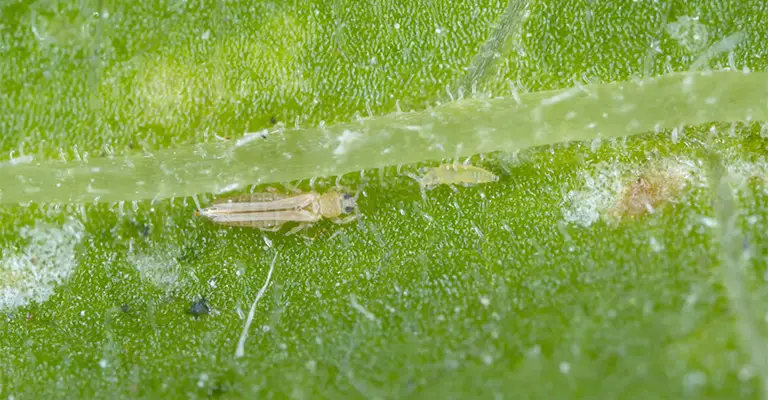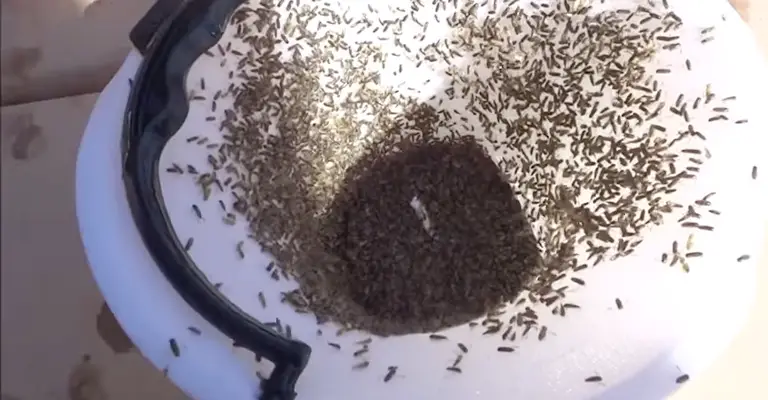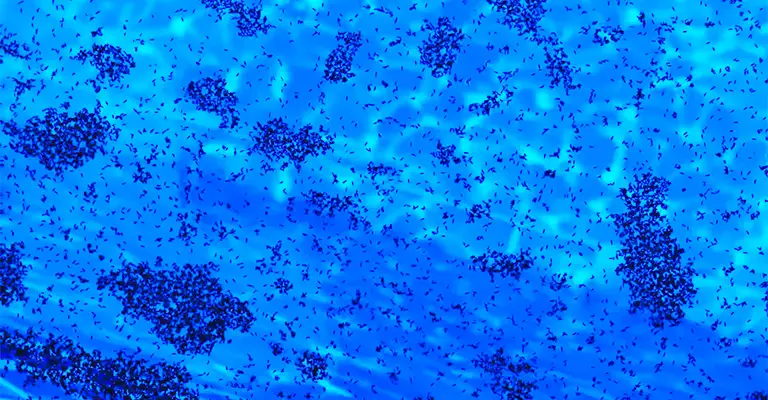It’s hard to find anything more refreshing than a swim in a crystal-clear pool on a hot summer day. It’s a fact of life that the pool doesn’t stay clean on its own, as any pool owner knows.
There are plenty of things pool owners don’t want to see in the water like bugs, leaves, dirt, algae, and rodents.
The sight of tiny black insects in the pool after it rains may seem familiar, but for some pool owners it’s a new sight.
This small black insect is now threatening your next swim in the pool! It may have been sparkling clean before the rain, but now it is not so clean!
The pool may become infested with tiny black bugs after a rainfall. Even though none of them are likely to cause much harm to people, they can certainly be annoying.
Types Of Tiny Black Bugs In The Pool
It’s best to observe the behavior of bugs in your pool if you want to determine what type they are. Do they jump, swim, float, etc.?
If you’d like to examine them more closely, you can also capture them with a pool net or clear container. In order to control the population of bugs, you need to know the type of bug you’re dealing with.
The following varieties of bugs can be described as tiny and black in the pool:
- Thrips
- Springtails
- Pool mites
The good news is that they can be distinguished relatively easily from each other.
1. What are Thrips?

It is well known that thrips damage plants with their tiny, slender bodies. It is common for thrips to measure between 1 and 2 millimeters in length, and they can vary in color from yellow to black.
They have the ability to fly, making them highly mobile and fast. Due to their rapid reproduction and ability to hide in crevices, thrips are difficult to control.
A lot of thrips can bite, especially when they have a large population, so you should keep them away from the pool.
Due to their inability to swim, thrips are easily drowned. Their presence around pools is typically due to their preference for nearby vegetation or in order to avoid predators. A slick surface prevents them from escaping once they are in the water.
2. What are Springtails?

There have been reports of springtails invading pools in high numbers. Grey, brown, or black is the most common color for most species.
A springtail is typically slender and very small, about one sixteenth of an inch long, just like fleas. Their bodies are soft and have antennae.
While they may appear small, they are usually seen in large numbers, which can easily attract the attention of passersby.
It is difficult for them to swim, but they float on the surface of the pool very well. It is impossible for them to escape the pool since they do not have wings.
To force them to drown, you can agitate the surface of the pool. Additionally, you can drown them by spraying dish soap around the perimeter.
3. What are Pool Mites?

You may find pool mites floating around your pool after a rainstorm, also known as water mites. Red, brown, or black may be the color of some species.
They are very small, measuring only 2-3 mm in diameter, and may resemble tiny round spiders.
You may find pool mites living on wet soil around your pool or on plants around the pool. Pool mites thrive in damp areas, as well as on wet soil. Moreover, they enjoy eating algae and larvae floating around your pool.
It is unlikely that they will eat humans, despite the fact that they eat larvae and algae in your pool.
It’s important to eliminate these mites as soon as possible since they multiply so rapidly. When their numbers grow, predators such as backswimmers may become interested in them.
How To Get Rid of Pool Mites and Other Tiny Black Bugs?

The pool mite problem doesn’t have to be a permanent problem, as there are a few things you can do to get rid of them. You can get rid of all kinds of bugs, especially after heavy rain, by following these steps:
1. Adjust Landscaping
Vegetation, such as plants, leaves, flowers and other vegetation, is a favorite food source for bugs. Although your pool may look nice with nice plant life surrounding it, they may be the source of pest infestations.
The sage, lavender, catnip, and rosemary plants are some of the plants that repel pests. These plants act as natural bug repellents, helping to keep bugs away from your pool.
2. Shock Your Pool
The best way to get rid of unwanted organic matter floating around in your pool is to shock it with chlorine.
In order to chock your pool, the amount of chlorine you need depends on how much stabilizer or cyanuric acid you have in it. To shock a system effectively, it is often enough to raise the free chlorine level to more than 10 ppm.
It should take 48 to 50 hours for chlorine levels to return to a safe level, that is, between 1 and 3 ppm.
3. Vacuum and Brush Your Pool Regularly
It is just as important to vacuum your pool as it is to skim it. That’s because it removes all the dead bugs and debris that has settled in the ground. Maintain your swimming pool’s cleanliness by using a pool vacuum.
The brushing process also loosens up any stubborn contaminants and removes any tiny bugs that are hidden inside small gaps.
4. Skim Your Pool Daily
You should regularly skim your pool with a pool net to remove other organic meals that these bugs may consume.
Skimmers built into pool pumps will help keep the surface clean while the pump is running. Even so, manual skimming sometimes works better, especially after a rainstorm has muddy the pool.
5. Get Rid of Algae
Algae is a major food source for many pool bugs. The key to eliminating bugs is to remove the algae.
The pool should be scrubbed down on all surfaces where algae might hide, and it should be shocked to remove the algae. The use of an algaecide on a periodic basis will also help to prevent algae growth in the future.
6. Clear Standing Water
Obviously, there’s standing water in the pool, but all that regular maintenance is for that purpose. It is not a good idea to dump or clean anything that has standing water or dampness.
The term includes birdbaths, pet bowls, wheelbarrows, outdoor toys, and any other place where water accumulates.
Aerate your lawn periodically and clean out your gutters regularly to prevent damp areas.
Taking these steps to control swimming pool mosquitoes will help you spend more time near the pool even though they aren’t tiny insects.
7. Get Your Trash Somewhere Else
It is also important to note that trash attracts bugs. Place the garbage cans as far away from your pool as possible.
8. Place Lighting As Far Away As Possible
Which is the most common thing that attracts bugs at night? Those lights! It is therefore recommended that you keep any lighting 30 feet or more away from the edge of a pool.
The use of citronella candles can help you achieve both objectives at once if you need better lighting for night swimming.
How To Keep Pool Mites Away?
Knowing how to keep those tiny creatures away from your pool will help you prevent them from getting in. As they say, “an ounce of prevention is worth a pound of cure.”.
In order to do so, follow these steps:
The most effective way to keep those bugs out of your pool is to place all lighting fixtures as far away as possible.
There are several water bugs that feed on vegetation near the pool, so keep it away from it.
Alternatively, choose plants like lavender, catnip, rosemary, or sage that repel insects. Garbage cans are also a breeding ground for mosquitoes, so keep them away from the pool.
Your garden should be free of any still water sources, including bird baths, outdoor water toys, and pet water dishes. Standing water will breed mosquitoes, which will cause more bugs around the pool.
What Happens After Rain?
Is there a reason why your pool may have a sudden increase in bugs after a rain? A couple of reasons explain this.
It is possible for bugs to grow and reproduce in moist conditions around a pool following a rainfall. Some bugs may also travel farther in the rain, and potentially into your pool as a result.
These tiny black bugs may also be hiding in the vegetation near the pool. The wind and rain combined could blow them into the pool in a favorable scenario.
Mosquitoes can also flourish when it rains, which is why pool mites may latch onto them. In other words, mosquitoes could carry these mites around your pool as they get close to it.
Final Words
The annoying problem of tiny black bugs in the swimming pool after a rainstorm is similar to how a pool turns green overnight.
The best way to keep your pool tiny black bug-free is to understand the problem, take preventative measures, and eliminate the pests as effectively as possible.
You can keep your pool clean and healthy for the entire swimming season by making a few simple changes.







